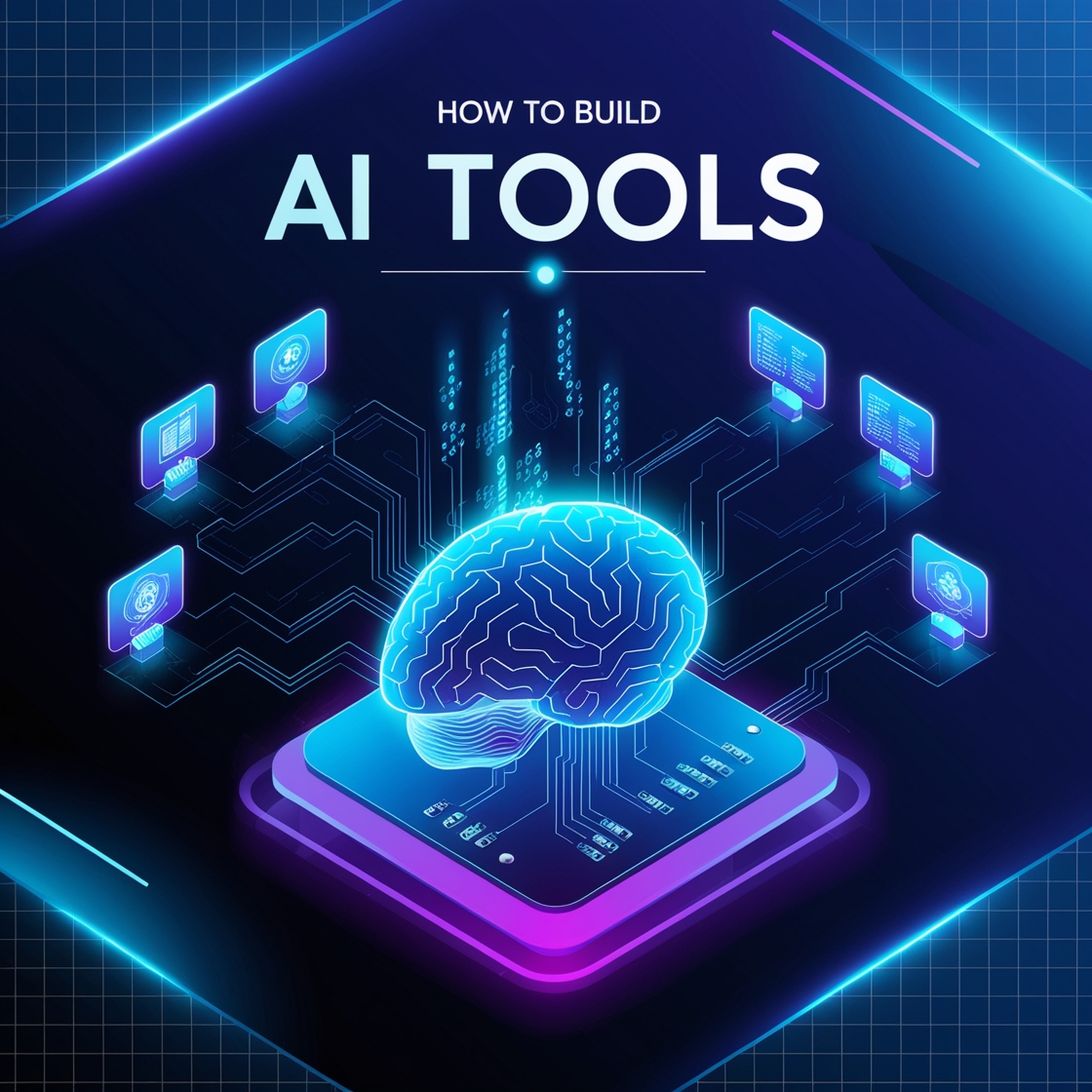Introduction
The Dawn of Intelligent Tools
We stand at the threshold of a digital renaissance. Artificial Intelligence is no longer a concept confined to laboratories; it thrives in our daily lives. From virtual assistants whispering answers to our questions to predictive algorithms that anticipate our needs, AI tools are sculpting a new reality.
Why Building AI Tools Matters Today
The creation of AI tools empowers innovators to solve pressing challenges, enhance efficiency, and redefine industries. Building such tools is not a privilege; it’s an opportunity to influence the future.
Understanding AI Fundamentals
What Exactly is Artificial Intelligence?
Artificial Intelligence mimics human cognition. It processes vast volumes of data, learns from patterns, and makes decisions with precision. Unlike traditional software, it evolves with every interaction.
Machine Learning vs. Deep Learning
Machine Learning teaches algorithms to learn from data without explicit programming. Deep Learning, a subset, dives deeper—utilizing neural networks to solve complex problems like image recognition and natural language processing.
The Role of Data in AI Evolution
Data is the lifeblood of AI. Without it, models falter. With rich, diverse datasets, AI systems grow intelligent, perceptive, and adaptable.
Identifying the Purpose of Your AI Tool
Pinpointing the Problem to Solve
Every successful AI tool begins with a problem. Identify a real-world issue that needs an intelligent solution. Narrowing the focus ensures precision.
Aligning Objectives with User Needs
Understanding end-users is pivotal. Align the tool’s objectives with their pain points, making it not only innovative but indispensable.
Examples of Successful AI Tools
Consider AI-driven chatbots that revolutionize customer service or recommendation engines that personalize shopping experiences. These tools succeeded because they solved clear problems elegantly.
Choosing the Right Technology Stack
Programming Languages for AI Development
Python reigns supreme with its simplicity and rich ecosystem. R, Java, and C++ also play significant roles in various AI domains.
Essential Frameworks and Libraries
Frameworks like TensorFlow, PyTorch, and Scikit-learn accelerate development, providing robust pre-built components.
Cloud Platforms vs. Local Infrastructure
Decide whether to harness cloud scalability or maintain control with local servers. Each path offers distinct advantages.
Data: The Fuel of AI Tools
Collecting High-Quality Data
Garbage in, garbage out. Curate datasets meticulously, ensuring diversity and relevance.
Cleaning and Preprocessing Data
Raw data is messy. Cleaning eliminates noise, while preprocessing shapes it for optimal learning.
Ensuring Ethical Data Usage
Respect privacy. Uphold ethical standards to foster trust in your AI creation.
Designing the Architecture
Selecting Model Architecture
From simple linear models to intricate deep neural networks, choose an architecture that fits the problem’s complexity.
Balancing Performance and Efficiency
A fast model that sacrifices accuracy is futile. Likewise, an accurate but sluggish model frustrates users. Strike the perfect balance.
Incorporating Scalability from the Start
Design with the future in mind. Scalability ensures your tool adapts as demand surges.
Training Your AI Model
Choosing the Right Training Algorithms
Algorithms dictate learning patterns. Decision trees, gradient boosting, or convolutional networks—each serves unique purposes.
Avoiding Overfitting and Underfitting
An overfit model clings to training data; an underfit one misses patterns. Regularization and cross-validation keep models in check.
Hyperparameter Tuning for Optimal Results
Adjust parameters like learning rates and batch sizes. Fine-tuning can dramatically enhance outcomes.
Testing and Validation
Building Reliable Test Datasets
Set aside unseen data to validate performance. It ensures the model generalizes beyond training.
Performance Metrics that Matter
Metrics like accuracy, F1-score, and AUC paint a holistic picture of model performance.
Iterating Based on Feedback
Testing is not a one-off. Iterate, refine, and evolve continually.
User Interface and Experience
Simplifying Complex AI Interactions
Complexity should hide behind simplicity. Users should interact effortlessly with the tool.
Designing Intuitive Dashboards
A clear, visually appealing dashboard enhances usability and engagement.
Enhancing User Trust through Transparency
Explain decisions. Transparency cultivates trust, a cornerstone of successful AI adoption.
Deployment of Your AI Tool
Preparing for Real-World Usage
Stress-test your tool under real-world conditions to uncover potential pitfalls.
Cloud Deployment Strategies
Leverage cloud elasticity to scale resources dynamically and reduce operational burdens.
Continuous Monitoring Post-Launch
Monitor performance vigilantly. Real-world data may reveal new challenges.
Maintaining and Updating the Tool
Regular Model Retraining
Data evolves. Retraining ensures the model stays relevant and effective.
Integrating User Feedback
Users provide invaluable insights. Incorporate their suggestions to enhance functionality.
Adapting to Emerging Technologies
Stay ahead by integrating new innovations, keeping your tool cutting-edge.
Security Considerations
Protecting Data Integrity
Implement robust encryption and access controls to safeguard sensitive information.
Mitigating AI-Driven Vulnerabilities
AI can be exploited. Harden defenses against adversarial attacks.
Compliance with Regulations
Ensure adherence to legal frameworks like GDPR to avoid repercussions.
Scaling for the Future
Designing for Growth
Architect for expansion. Future-proofing prevents costly redesigns.
Leveraging Edge AI for Speed
Edge AI processes data closer to the source, reducing latency and improving performance.
Preparing for Next-Gen Innovations
Quantum computing, neuromorphic chips—stay prepared for the technologies shaping tomorrow.
Conclusion
Embracing the AI Revolution
Building AI tools is not merely a technical endeavor; it’s an artistic pursuit of intelligence.
The Endless Possibilities Ahead
With every tool crafted, we inch closer to a world where AI enriches every facet of life. The journey has just begun.


